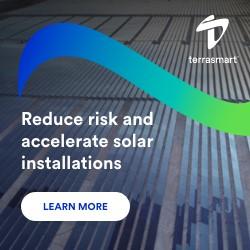Trina Solar and ANU Jointly Develop High Efficiency Solar Cell
Marks Highest Efficiency for a Back Contact Silicon Solar Cell
CHANGZHOU, China, Feb. 28, 2014 -- Trina Solar Limited ("TSL" or "Trina Solar"), a global leader in photovoltaic modules, solutions and services, announced today that researchers from Trina Solar and the Australian National University ("ANU") have jointly developed a new high-efficiency solar cell.
The laboratory scale Interdigitated Back Contact ("IBC") cell was developed at the Australian National University Centre for Sustainable Energy Systems under a research and development contract with Trina Solar through a collaboration contract with the Solar Energy Research Institute of Singapore (SERIS). After two years of research, funded by Trina Solar, the ANU has developed, with contribution from Australian consulting firm PV Lighthouse, an IBC silicon solar cell, which was independently tested by the Fraunhofer CalLab in Germany to be able to deliver an efficiency of 24.4%, putting it among the most efficient solar cells to date.
Trina Solar is now developing a commercial version of the IBC solar cell as well as an IBC PV module. The commercial cell has already reached an efficiency greater than 22% for a 125mm by 125mm IBC solar cell, and 238W for an IBC PV module (based on 72 cells), which was independently tested by the National Center of Supervision and Inspection on Solar Photovoltaic Products Quality of China. Though it is currently in laboratory scale, the new solar cell will soon be ready for industrialized mass production.
"We are delighted to collaborate with leading scientists at ANU on this exciting new development in our cell technologies," said Dr. Pierre Verlinden, Vice-President and Chief Scientist of Trina Solar. "This marks a milestone in solar cell research with an improved IBC cell efficiency of 24.4%. This world-class efficiency demonstrates our commitment to leading innovation in PV technology. We remain committed to engaging in effective partnerships with the best PV research centers, which are fundamental to delivering R&D breakthroughs."
"This is the highest efficiency independently confirmed for a conventional IBC solar cell to date," said Professor Andrew Blakers, Director of the Centre for Sustainable Energy Systems at the ANU Research School of Engineering. "The results mean the laboratory cell technology can now be further developed for commercial solar cells. The work is expected to lead to commercial solar cells with improved efficiency, allowing more power to be generated from a given area of rooftop solar module."
Professor Blakers added, "The ANU has been working to develop highly efficient back contact silicon solar cells, which have both positive and negative metallic contacts on the rear surface. That allows the surface facing the sun to be uniformly black, without the metal electrodes present on most solar cells. The back contact cell structure enables the end user to gain more electricity per unit area and a more favourable appearance."
Featured Product

Terrasmart - Reduce Risk and Accelerate Solar Installations
We push the limits in renewable energy, focusing on innovation to drive progress. Pioneering new solutions and ground-breaking technology, and smarter ways of working to make progress for our clients and the industry.
